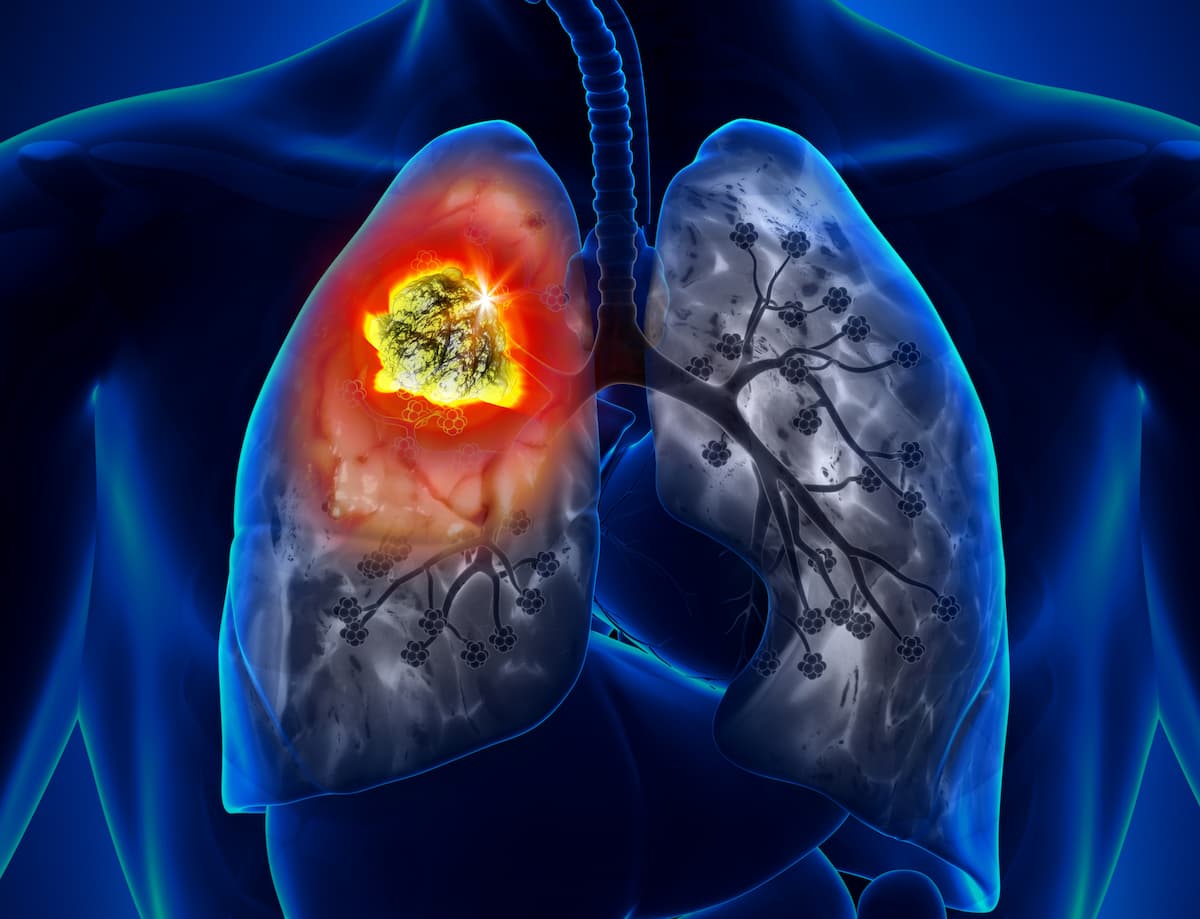Tiragolumab/Atezolizumab Yields Preliminary Activity in NSCLC Cohort
Data from a phase 1a/1b trial support additional research on dual TIGIT/PD-L1 inhibition in patients with advanced solid tumors.
"These data support the continued investigation of dual TIGIT/PD-L1 inhibition in advanced solid tumors," according to the authors of the phase 1a/1b GO30103 trial (NCT02794571).

Tiragolumab with or without atezolizumab (Tecentriq) produced promising anti-tumor activity in small cohorts of patients who were immunotherapy-naïve with metastatic non–small cell lung cancer (NSCLC) and esophageal cancer, according to findings from the phase 1a/1b GO30103 trial (NCT02794571) published in JAMA Oncology.
In the phase 1a portion of the trial, investigators reported no objective responses, although there was stable disease and tumor shrinkage in 4 patients. The best objective response rate (ORR) in phase 1b was 6% (n = 3), which consisted of 1 complete response (CR) and 1 partial response (PR) in a patient with NSCLC, a PR in a patient with head and neck squamous cell carcinoma, and 1 in a patient with microsatellite instability-high colon cancer.
The confirmed ORR with tiragolumab plus atezolizumab in the phase 1b dose expansion cohort of patients with metastatic NSCLC was 46% (n = 6/13). Additionally, the disease control rate (DCR) was 77% (n = 10/13), and the median duration of response (DOR) was 24.2 months (95% CI, 9.7-not reached [NR]). All patients with a response in the NSCLC cohort had a PD-L1 expression of at least 1%.
Combining tiragolumab with atezolizumab elicited a confirmed ORR of 28% (n = 5/18) and a DCR of 50% (n = 9/18) in a cohort of patients with metastatic esophageal cancer. Investigators also highlighted a median DOR of 15.2 months (95% CI, 7.0-NR) in this cohort. Additionally, responses occurred regardless of squamous or adenocarcinoma histology.
“Primary analysis of the [phase 2] CITYSCAPE study [NCT03563716] showed that tiragolumab plus atezolizumab produced a statistically significant and clinically meaningful improvement in ORR and prolonged progression-free survival in patients with NSCLC whose tumors showed high PD-L1 expression relative to placebo plus atezolizumab,” the study authors wrote. “These data support the continued investigation of dual TIGIT/PD-L1 inhibition in advanced solid tumors.”
In the open-label, first-in-human phase trial, patients with advanced solid tumors were treated with fixed-dose intravenous tiragolumab every 3 weeks escalating between 2 mg to 1200 mg. In the phase 1b portion of the trial, patients received the experimental agent plus 1200 mg of atezolizumab intravenously every 3 weeks. Investigators identified a recommended phase 2 dose (RP2D) of 600 mg of tiragolumab every 3 weeks.
The study’s primary end points included safety, tolerability, and RP2D of tiragolumab. Secondary end points included the pharmacokinetics and preliminary activity of tiragolumab alone and in combination with atezolizumab.
Patients 18 years and older with an ECOG performance status of 0 or 1 and measurable disease per RECIST v1.1 criteria were eligible for enrollment on the study. Additionally, patients were required to receive no prior immunotherapy treatment to be able to enroll in the phase 1b dose-expansion cohorts.
The phase 1a dose escalation portion included 24 patients. The median age was 60 years (range, 40-77), and 58% of patients were female. Additionally, 71% of patients in this cohort had an ECOG performance status of 1, and 42% received at least 4 prior lines of anti-cancer therapy.
Investigators assessed a total of 49 patients in the phase 1b dose escalation portion of the trial. The median age in this cohort was 54 years (range, 25-81). Most patients were women (51%) and had an ECOG performance status of 1 (74%). Moreover, 37% of patients received a minimum of 4 prior lines of treatment.
Investigators highlighted no dose-limiting toxicities in phase 1a or 1b of the trial. The most frequent treatment-related adverse effects (TRAEs) in phases 1a and 1b, respectively, included fatigue (21% and 8%), pruritus (13% and 10%), and arthralgia (8% and 6%). Grade 3 or higher TRAEs affected 1 patient (4%) in phase 1a and 2 patients (4%) in phase 1b.
Overall, 17% and 59% of patients in phases 1a and 1b, respectively, experienced immune-mediated AEs. The most common immune-mediated toxicities in each respective group included rash (8% and 29%) and hepatitis (4% and 20%). Investigators reported no grade 4/5 immune-mediated toxicity related to the study treatment. The NSCLC and esophageal cancer phase 1b dose expansion cohorts also highlighted comparable safety findings.
Reference
Kim TK, Bedard PL, LoRusso P, et al. Anti-TIGIT antibody tiragolumab alone or with atezolizumab in patients with advanced solid tumors: a phase 1a/1b nonrandomized controlled trial. Published online September 28, 2023. doi:10.1001/jamaoncol.2023.3867